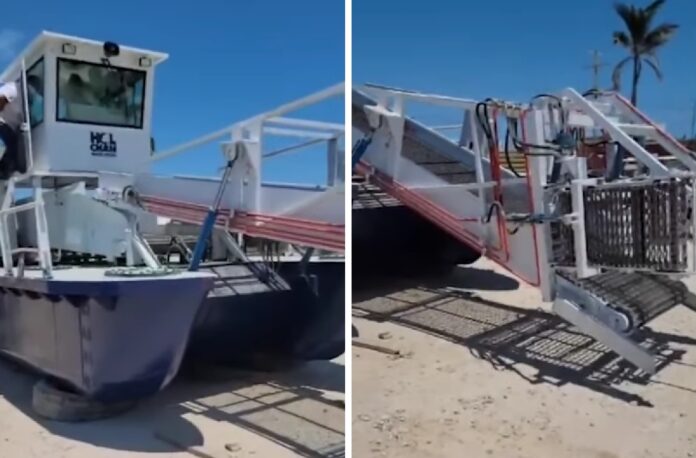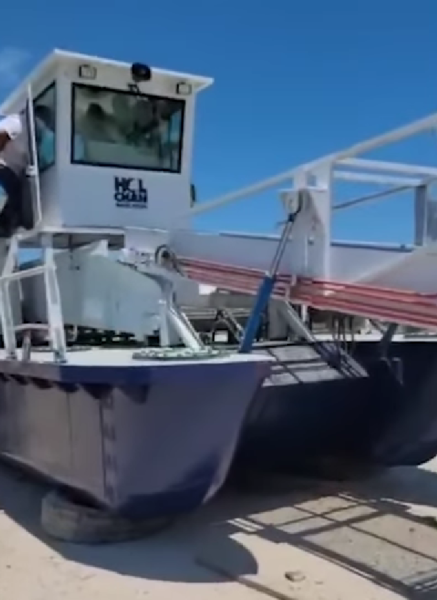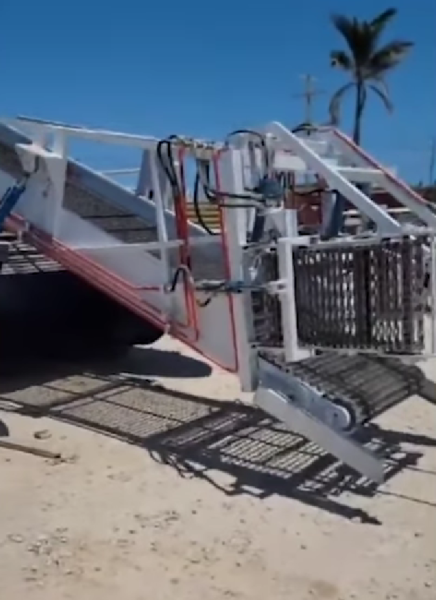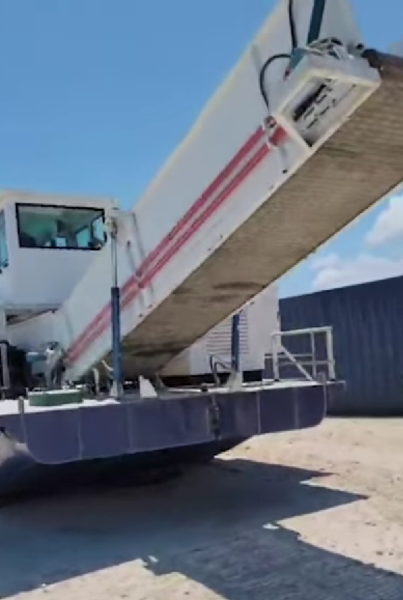San Pedro, Ambergris Caye, and other beaches across the country are currently dealing with an influx of Sargassum seaweed, and stakeholders and sanitation personnel of the San Pedro Town Council face challenges in removing the brown algae. On Wednesday, May 15th, Area Representative Honourable Andre Perez announced that two sargassum skimmers had been acquired and are now in the country. These skimmers, or harvester machines, are part of a collaborative project with the Hol Chan Marine Reserve. They are boat-like machines designed to capture sargassum at sea before it reaches the shoreline. The original plan was to acquire three of these skimmers, one placed near the Tres Cocos and Mar de Tumbo channels and another near the beach to collect additional seaweed.
Perez mentioned that the new equipment should arrive on the island in two to three weeks, pending the installation of the outboard engines. Once operational, the machines will pick up the sargassum from the sea and transport it to a smaller barge on the island’s western side, where the seaweed will be deposited at a designated collection area. Perez also noted that the imported skimmers from China would also pick up plastic and other types of rubbish from the sea, offering a potential solution to multiple environmental challenges.
These two skimmers, financed through a loan, cost nearly $1 million. In 2023, the Hol Chan Marine Reserve secured $3.5 million from the Social Security Board (SSB) to purchase the machines and sargassum barriers and cover capital expenditure. This decision raised concerns, as SSB’s funds are usually designated for other programs. However, it was explained that the project is crucial to protect Ambergris Caye’s tourism industry and fisheries. The accumulation of seaweed near the shore depletes oxygen, leading to the death of juvenile fish species. Additionally, when the seaweed decays on the beach, it releases harmful gases like hydrogen sulfide, affecting the attractiveness of beaches and businesses such as hotels and restaurants. It can also impact individuals with respiratory illnesses.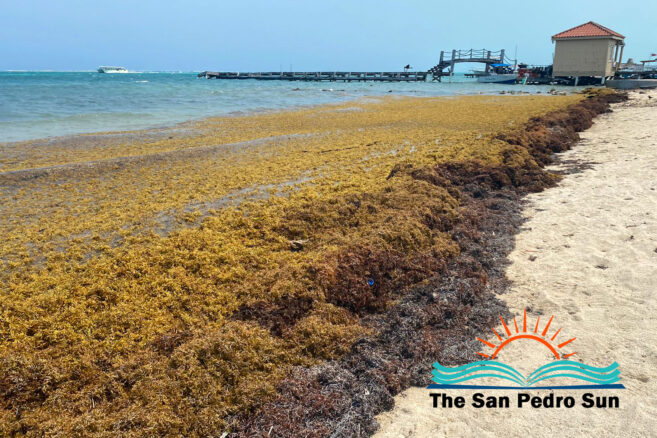
Opinions about the pilot project vary among islanders. Some are optimistic about its potential to address the sargassum invasion, while others believe that it may further harm the environment due to the use of fossil fuels. Some suggest considering natural approaches involving nature-based solutions, such as identifying sea currents to guide the sargassum to designated collection areas along the coast.

